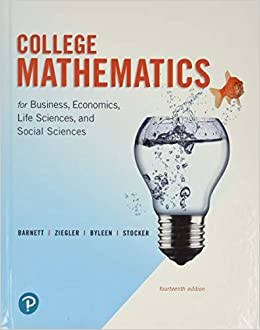A community of 10,000 people is homogeneously mixed. One person who has just returned from another community
Question:
A community of 10,000 people is homogeneously mixed. One person who has just returned from another community has influenza. Assume that the home community has not had influenza shots and all are susceptible. One mathematical model assumes that influenza tends to spread at a rate in direct proportion to the number N who have the disease and to the number 10,000 - N who have not yet contracted the disease (logistic growth). Mathematically,

where N is the number of people who have contracted influenza after t days. For k = 0.0004, N(t) is the logistic growth function

(A) How many people have contracted influenza after 1 week? After 2 weeks?
(B) How many days will it take until half the community has contracted influenza?
(C) Find lim t →∞ N(t).
(D) Graph N = N(t) for 0 ≤ t ≤ 50.
Step by Step Answer:

College Mathematics For Business Economics, Life Sciences, And Social Sciences
ISBN: 978-0134674148
14th Edition
Authors: Raymond Barnett, Michael Ziegler, Karl Byleen, Christopher Stocker





